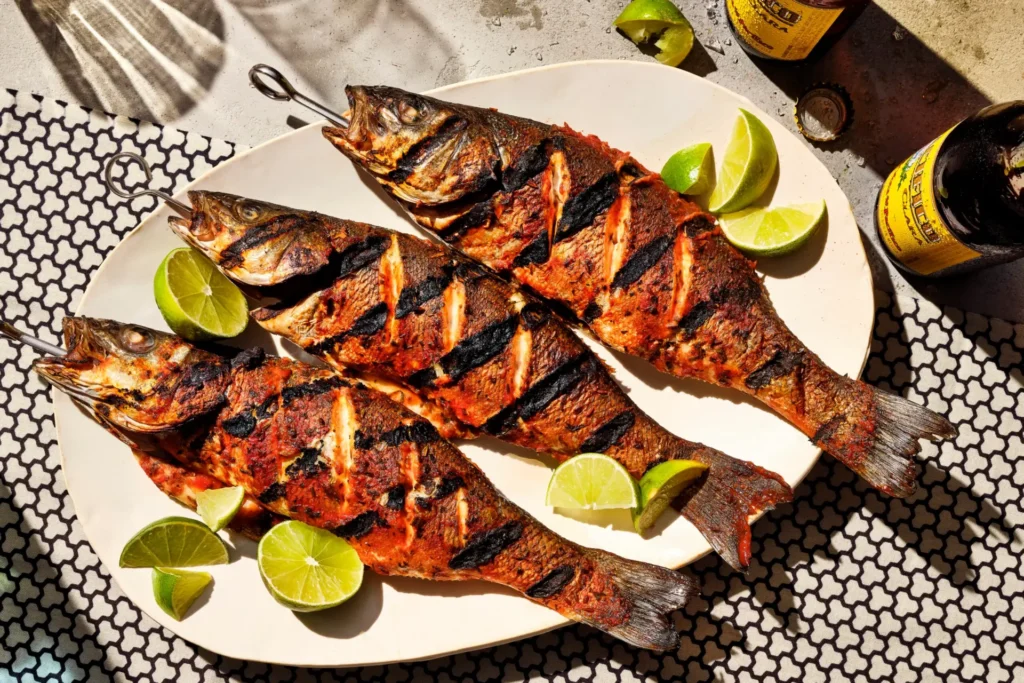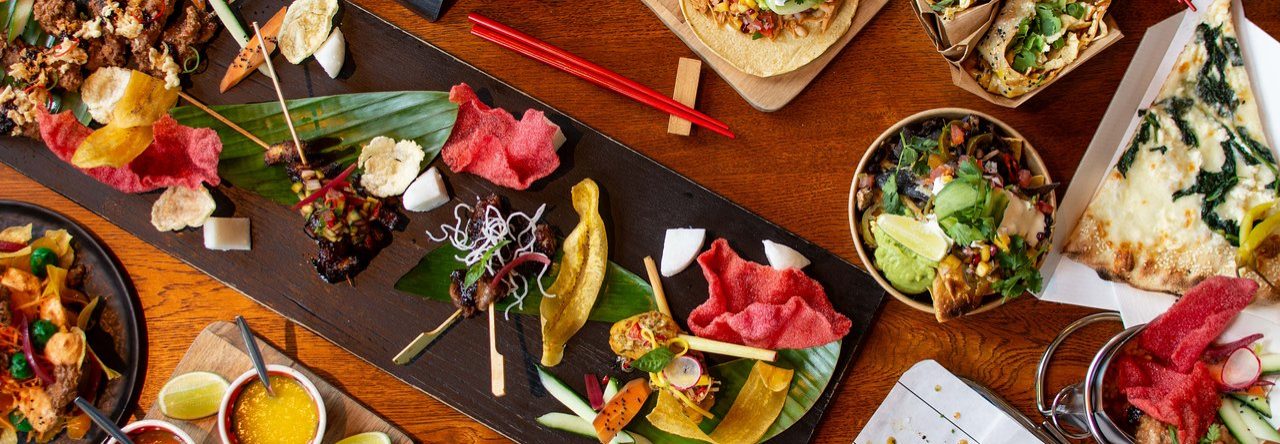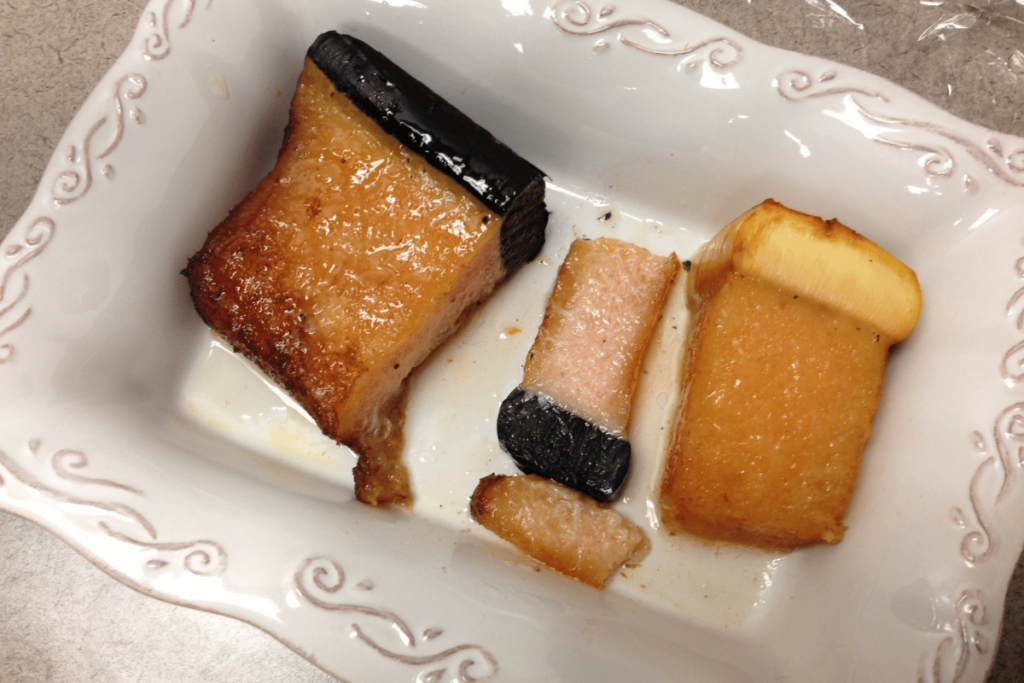Grilling fish is a culinary art form that requires finesse, skill, and an understanding of flavor pairings. Whether you’re a seasoned grill master or a novice cook, mastering the techniques and flavor combinations for fish BBQ can elevate your outdoor cooking game to new heights. In this comprehensive guide, we’ll explore the essential steps to perfecting your fish BBQ, from selecting the freshest catch to experimenting with marinades and seasonings.
Selecting the Perfect Fish

When it comes to grilling fish, selecting the perfect catch is the first step toward culinary success. The choice of fish can significantly impact the flavor, texture, and overall outcome of your BBQ experience. Opting for fresh, high-quality fish is essential to ensure delicious results that will tantalize your taste buds.
When selecting fish for grilling, consider the flavor profile and texture of the fish. Firm-fleshed fish such as salmon, tuna, or halibut are ideal choices for grilling as they hold up well to high heat and retain their moisture during cooking. These types of fish offer a robust flavor that pairs beautifully with a variety of seasonings and marinades.
In addition to considering the type of fish, pay attention to its freshness and quality. Look for fish that has bright, clear eyes, shiny skin, and a fresh, oceanic aroma. Avoid fish that appears dull, discolored, or has a strong fishy smell, as these are indicators of poor quality and may result in an inferior grilling experience.
Once you’ve selected your fish, take note of its size and thickness. Thicker cuts of fish, such as salmon steaks or swordfish fillets, are ideal for grilling as they cook more evenly and are less likely to dry out during cooking. Conversely, smaller fish or thin fillets may require shorter cooking times to prevent overcooking.
By carefully selecting the perfect fish for grilling, you can ensure a flavorful and satisfying BBQ experience that will delight your palate and impress your guests.
Preparing the Grill
Preparing the grill is a crucial step in the grilling process that can significantly impact the outcome of your BBQ endeavors. Properly preparing the grill ensures even cooking, prevents sticking, and enhances the flavor of the fish. By following a few simple steps, you can ensure that your grill is ready to deliver perfect results every time.
Begin by preheating your grill to medium-high heat, typically around 375-400°F. Preheating the grill allows it to reach the optimal cooking temperature and ensures that the fish cooks evenly and efficiently. While the grill is heating up, take the time to clean the grates thoroughly to remove any debris or residue from previous use.
Once the grates are clean, it’s essential to oil them lightly to create a non-stick surface for the fish. You can do this by brushing the grates with oil or using a grill spray to coat them evenly. Additionally, consider adding wood chips or aromatic herbs to the grill to infuse the fish with extra flavor during cooking.
By properly preparing the grill before cooking, you can ensure that your fish BBQ is a resounding success, with perfectly cooked fish that is bursting with flavor and aroma.
Mastering Grilling Techniques
Mastering grilling techniques is the key to achieving perfect results when cooking fish on the BBQ. By understanding the fundamentals of grilling and honing your skills, you can ensure that your fish is cooked to perfection every time, with a delicious charred exterior and moist, tender interior.
Start by placing the fish on the preheated grill, skin-side down if applicable, and allow it to cook undisturbed for a few minutes. Avoid moving the fish too much during cooking, as this can cause it to stick to the grates and break apart. Instead, allow the fish to develop a beautiful sear on the outside while retaining its natural juices and flavors.
As the fish cooks, monitor the temperature of the grill and adjust the heat as needed to maintain a steady cooking temperature. Depending on the thickness of the fish, it may take anywhere from 6 to 10 minutes per side to cook through completely. Use a meat thermometer to ensure that the internal temperature reaches 145°F for optimal doneness.
By mastering grilling techniques such as temperature control, timing, and proper handling, you can achieve perfect results every time and become a true grill master in your own right.
Exploring Flavor Combinations

Exploring flavor combinations is where the true artistry of grilling fish comes into play. By experimenting with different marinades, seasonings, and sauces, you can elevate the flavor of your grilled fish to new heights and create culinary masterpieces that will dazzle your taste buds.
When selecting flavor combinations, consider the type of fish you’re grilling and its inherent flavor profile. For example, citrus-based marinades pair beautifully with rich, fatty fish such as salmon, while Mediterranean-inspired herb rubs complement the delicate flavor of white fish like cod or snapper. Don’t be afraid to get creative and try out new flavor combinations to find your signature grilled fish recipe. In addition to marinades and rubs, consider incorporating aromatic ingredients such as garlic, ginger, or fresh herbs to enhance the flavor of your grilled fish. Experiment with different combinations of ingredients to create unique and exciting flavor profiles that will keep your guests coming back for more.
By exploring flavor combinations and embracing your creativity, you can take your grilled fish to the next level and create memorable dining experiences that will delight and impress even the most discerning palates.
Serving and Presentation
Serving and presentation are the final touches that can elevate your grilled fish from a simple meal to a culinary masterpiece. By paying attention to detail and taking the time to plate and present your fish with care, you can create a dining experience that is as visually stunning as it is delicious.
Start by carefully removing the fish from the grill and transferring it to a serving platter or individual plates. Allow the fish to rest for a few minutes before slicing to allow the juices to redistribute evenly, resulting in moist and flavorful fish with every bite.
When serving grilled fish, consider garnishing it with fresh herbs, citrus slices, or a drizzle of flavorful sauce to enhance its visual appeal and add a pop of color to the plate. Arrange the fish alongside a selection of seasonal sides such as grilled vegetables, rice pilaf, or a crisp salad to create a well-rounded and satisfying meal.
By paying attention to serving and presentation, you can transform your grilled fish into a work of art that will impress your guests and leave them eager for more. Whether you’re hosting a backyard BBQ or enjoying a cozy dinner at home, serving and presenting your grilled fish with style and flair is sure to make a lasting impression.
Enhancing Flavor with Marinades and Rubs
Marinades and rubs are essential tools in the griller’s arsenal for adding depth and complexity to grilled fish. A well-crafted marinade can infuse the fish with flavor and moisture, while a carefully blended rub can create a delicious crust that locks in juices and enhances the overall taste. When it comes to choosing marinades and rubs for fish BBQ, the key is to balance acidity, sweetness, and savory elements to complement the natural flavor of the fish.
For marinades, consider using ingredients like citrus juices, soy sauce, honey, and fresh herbs to create a flavorful bath for your fish. Citrus-based marinades, such as lemon or lime, are excellent for adding brightness and acidity to fatty fish like salmon or trout, while soy sauce and ginger marinades can impart a rich umami flavor to delicate white fish like tilapia or flounder. Experiment with different combinations of ingredients to find your perfect marinade recipe, and don’t be afraid to get creative with unconventional flavors like pineapple or coconut milk.
In addition to marinades, dry rubs are another fantastic way to add flavor and texture to grilled fish. A good rub should contain a balance of spices, herbs, and aromatics that complement the natural taste of the fish without overpowering it. Popular ingredients for fish rubs include paprika, garlic powder, cumin, and chili flakes, which can add warmth and depth to the flavor profile. Apply the rub generously to both sides of the fish before grilling, pressing it gently into the flesh to ensure even coverage. As the fish cooks, the rub will create a delicious crust that seals in moisture and enhances the overall taste.
Perfecting Grilling Techniques for Different Fish Varieties
While the basic principles of grilling apply to all types of fish, each variety may require slightly different techniques to achieve optimal results. Understanding the unique characteristics of different fish varieties can help you tailor your grilling approach to ensure perfectly cooked fish every time. From delicate fillets to hearty steaks, mastering the art of grilling fish requires versatility and adaptability to accommodate a diverse range of textures and flavors.
For thin fillets like sole or flounder, a gentle touch is essential to prevent them from falling apart on the grill. Consider using a fish basket or grilling mat to help support the fillets and prevent them from sticking to the grates. Cook the fillets over medium heat for just a few minutes on each side, being careful not to overcook them.
In contrast, thicker cuts of fish like swordfish or mahi-mahi require a more robust grilling approach to ensure even cooking. Start by searing the fish over high heat to create a caramelized crust, then lower the heat and continue cooking until the fish is opaque and flakes easily with a fork. Using a meat thermometer can help you monitor the internal temperature and prevent overcooking, ensuring tender and juicy fish every time.
Exploring Sustainable Seafood Options

As consumers become more conscious of the environmental impact of their food choices, the demand for sustainable seafood options has grown significantly in recent years. When it comes to grilling fish, choosing sustainably sourced seafood is not only good for the planet but also ensures that future generations will be able to enjoy the bounty of the ocean. Fortunately, there are plenty of delicious and environmentally friendly options available for the discerning griller.
When selecting seafood for grilling, look for species that are certified sustainable by reputable organizations like the Marine Stewardship Council (MSC) or the Aquaculture Stewardship Council (ASC). These certifications ensure that the fish has been harvested or farmed in a manner that minimizes environmental impact and promotes responsible fishing practices. Additionally, consider choosing locally sourced fish whenever possible to support small-scale fishermen and reduce the carbon footprint associated with transportation.
In addition to choosing sustainable seafood, grilling enthusiasts can also take steps to minimize waste and conserve resources during the cooking process. Use reusable grilling tools and accessories instead of disposable ones, and opt for natural charcoal or propane instead of traditional charcoal briquettes, which can release harmful emissions into the atmosphere. By making eco-conscious choices both at the grocery store and at the grill, you can enjoy delicious grilled fish guilt-free while doing your part to protect the planet for future generations.
Conclusion
Grilling fish is a delightful culinary adventure that offers endless opportunities for creativity and exploration. Whether you’re a seasoned grill master or just starting out, mastering the art of fish BBQ requires patience, practice, and a willingness to experiment with different techniques and flavor combinations. By selecting the perfect fish, preparing your grill with care, and exploring innovative marinades and rubs, you can elevate your outdoor cooking game and create unforgettable meals that will delight your family and friends. So fire up the grill, embrace the flavors of the sea, and let your culinary imagination soar as you embark on your journey to become a true fish BBQ aficionado.






